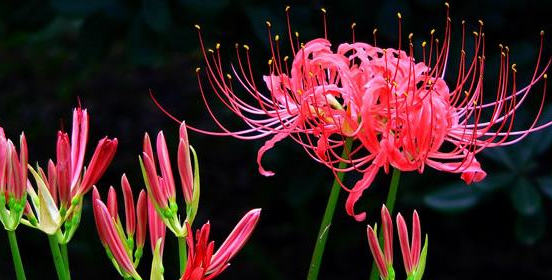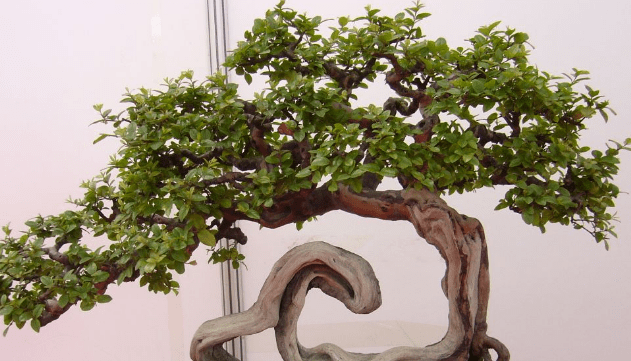It is not suitable for long-term breeding or placing indoor flowers.
Some flowers have to be said to be beautiful, but some are really not suitable for long-term breeding indoors, or it is the same to put them indoors, and some flowers will have some adverse effects on human health. The following editors introduce flowers that should not be cultivated or kept indoors for a long time. I hope everyone likes it.
Datura

Mandala is like an invisible killer. Don't stay at home. The whole plant is poisonous. One is that fruits and seeds are more toxic, and the other is tender leaves. Even air-dried leaves are toxic. Its flowers are also anesthetic. After eating, they can make people excited and hallucinate. Excessive consumption can cause damage to the nerve center and seriously threaten life.
Five-colored plum
Wu Saimei is a wild flower planted in Guangdong, Hainan, Fujian, Taiwan, Guangxi and other South China. The plant itself is harmless, but its flowers, leaves and immature fruits are poisonous. If eaten, it can cause serious consequences, such as chronic liver poisoning, coma, vomiting, diarrhea, fever, jaundice, shortness of breath and other symptoms.
Yu Meiren
The beauty of a beautiful woman is beautiful, and its legend is even more shocking, but its whole plant is poisonous. It belongs to the family Papaveraceae and its fruit is more toxic. Intake can lead to disorders of the brain's nervous system, and serious life and health may be threatened.
Oleander
Oleander can be said to be toxic to all plants. The white juice it secretes can cause vomiting, loss of consciousness, diarrhea, respiratory disorders and other symptoms. In serious cases, it can endanger health and life. Especially when burning oleander leaves, the smoke is also highly toxic.
Geranium
Geraniums, also known as hydrangeas, are better flowers that decorate windowsills and corners, but their own substances can cause itching when exposed to the human body. If you eat the stem of hydrangea, it will cause urgent urination, pain, diarrhea, breathing, vomiting, stool blood and so on.
Narcissus
Daffodils have been cultivated and watched for more than a thousand years, and people can feel warm and quiet indoors. But its head (forest) contains Lactoxin. Its flowers, branches and leaves are all poisonous. When fruit juice splashes on the skin, the skin quickly turns red and swollen. Poisoning can cause abdominal pain, nausea and vomiting. Its flower fragrance can also cause nervous system disorder, long-term inhalation of its aroma will make dizziness, inhaled more seriously before going to bed.
Poinsettia
Poinsettia blossoms for a long time, only during Christmas and Spring Festival. It can be used to decorate the room, which can increase the festive atmosphere, but can not be kept indoors for a long time, because it will release harmful substances harmful to the human body. The milk secreted by it is slightly inadvertently exposed to the skin, which may cause allergic reactions, which can lead to rapid redness and swelling of the skin. In severe cases, it can fester; if stems and leaves are mistakenly eaten, it can cause abdominal pain, vomiting and, if severe, fatal.
Time: 2019-05-07 Click:
- Prev

An inventory of magical insectivorous plants
Many plants in nature are insects. Do you think this is great? So, do you know what plants eat insects? Here is a small series for you to count some magical carnivorous plants. I hope everyone likes them. Grass paste vegetables, also known as gold, white flowers and leaves, summer without trace, pepper grass, mountain pepper
- Next

How to cultivate sparrow plum bonsai
When bonsai is made of bonsai, the roots are strange and its trees are full of vitality and simplicity. This kind of flowers and trees are very suitable for making bonsai. The following is the editor to introduce the methods of bonsai planting, hoping to help you.
Related
- Fuxing push coffee new agricultural production and marketing class: lack of small-scale processing plants
- Jujube rice field leisure farm deep ploughing Yilan for five years to create a space for organic food and play
- Nongyu Farm-A trial of organic papaya for brave women with advanced technology
- Four points for attention in the prevention and control of diseases and insect pests of edible fungi
- How to add nutrient solution to Edible Fungi
- Is there any good way to control edible fungus mites?
- Open Inoculation Technology of Edible Fungi
- Is there any clever way to use fertilizer for edible fungus in winter?
- What agents are used to kill the pathogens of edible fungi in the mushroom shed?
- Rapid drying of Edible Fungi

